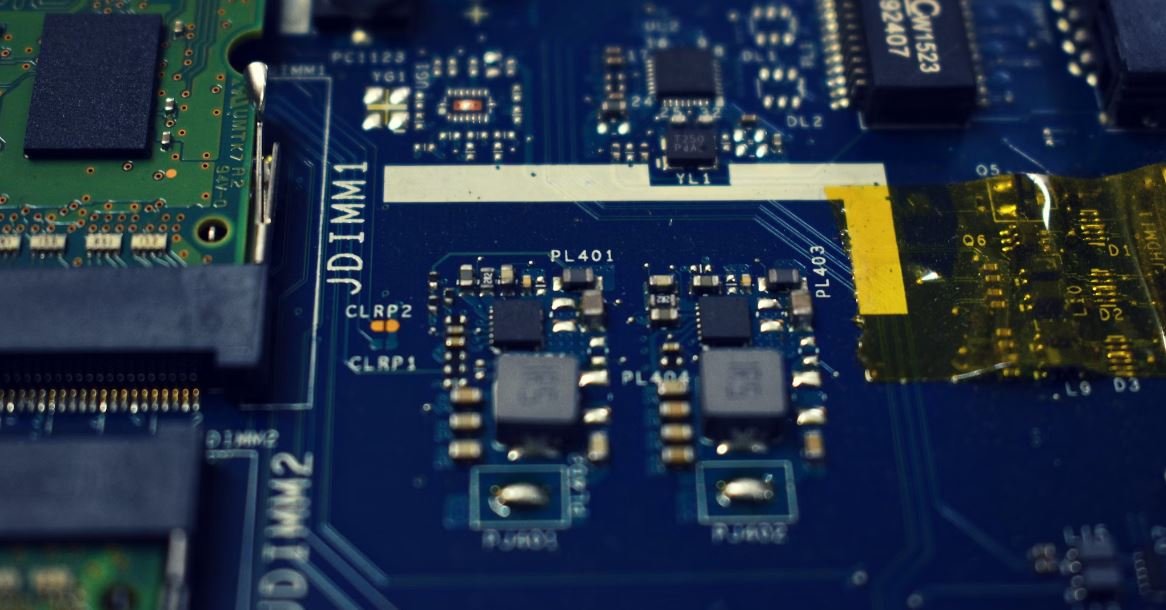Data Mining Healthcare Examples
Data mining in healthcare is the process of extracting useful information and insights from large datasets to improve patient care, identify patterns, and make informed decisions. With the increasing availability of electronic health records and advanced analytics techniques, data mining has become a valuable tool for healthcare providers, researchers, and policymakers.
Key Takeaways
- Data mining in healthcare involves extracting valuable insights from large datasets to improve patient care.
- Electronic health records and advanced analytics techniques contribute to the effectiveness of data mining in healthcare.
- Data mining is utilized by healthcare providers, researchers, and policymakers to analyze patterns and make informed decisions.
The Role of Data Mining in Healthcare
Data mining plays a critical role in healthcare by enabling practitioners to effectively analyze vast amounts of patient data to identify patterns, trends, and correlations. Through data mining techniques such as classification, clustering, and association rule learning, healthcare professionals can gain valuable insights that may impact decision-making processes and patient outcomes.
- Data mining enables healthcare professionals to identify patterns, trends, and correlations in patient data.
- *Data mining techniques such as classification, clustering, and association rule learning are used to gain valuable insights.
- These insights can impact decision-making processes and improve patient outcomes.
Data Mining Examples in Healthcare
Data mining has several practical applications in healthcare. Let’s explore a few examples:
1. Disease Prediction and Diagnosis
Data mining techniques can be utilized to predict and diagnose various diseases. By analyzing patient data such as symptoms, medical history, and genetic information, algorithms can identify patterns and indicators of specific diseases. This enables healthcare professionals to make faster and more accurate diagnoses, leading to timely treatment plans and improved patient outcomes.
2. Drug Interaction Analysis
Data mining can help identify potential interactions and adverse effects of different drugs. By analyzing large datasets containing patient demographics, medical history, and drug prescriptions, algorithms can detect patterns and predict potential drug-drug interactions. This information enables healthcare providers to avoid potentially harmful situations and prescribe medications that are safe for individual patients.
3. Hospital Resource Optimization
Data mining in healthcare can also be applied to optimize hospital resource allocation. By analyzing patient admission records, treatment outcomes, and resource utilization patterns, algorithms can identify areas where resource utilization can be improved. This includes optimizing bed allocation, managing staffing levels, and minimizing equipment downtime, ultimately leading to better patient care and cost savings.
Data Mining Tables
| Example | Benefits |
|---|---|
| Disease Prediction and Diagnosis | – Faster and more accurate diagnoses. – Timely treatment plans. – Improved patient outcomes. |
| Drug Interaction Analysis | – Identification of potential drug interactions. – Prevention of adverse effects. – Safer medication prescribing. |
| Hospital Resource Optimization | – Optimized resource allocation and utilization. – Improved patient care. – Cost savings. |
The Role of Data Mining in Healthcare Research and Policy
Data mining also plays a crucial role in healthcare research and policy development. By analyzing large healthcare databases, researchers can identify patterns and associations that may contribute to the understanding of diseases, treatment outcomes, and population health. Policy developers can use the insights gathered from data mining to make evidence-based decisions and design targeted interventions that address specific healthcare challenges.
- Data mining in healthcare research enables the identification of patterns and associations for diseases and treatment outcomes.
- *Insights from data mining contribute to evidence-based policy development.
- Data mining aids in designing targeted interventions for specific healthcare challenges.
Conclusion
Data mining has become an invaluable tool in healthcare, allowing practitioners, researchers, and policymakers to analyze vast datasets and extract meaningful insights. By leveraging electronic health records and utilizing advanced analytics techniques, data mining helps improve patient care, optimize resource allocation, and contribute to evidence-based decision-making in healthcare.
With ongoing advancements in technology and data collection, data mining will continue to play a vital role in driving innovation and improving healthcare outcomes.

Data Mining in Healthcare: Common Misconceptions
There are several common misconceptions surrounding the topic of data mining in healthcare. Despite its growing importance and impact on the industry, various misunderstandings persist. By addressing these misconceptions, we can gain a clearer understanding of the benefits and limitations of data mining in healthcare.
1. Data mining is invasive and compromises patient privacy:
- Data mining in healthcare is performed on aggregated and de-identified data, ensuring patient privacy is protected.
- Stringent ethical guidelines and legal frameworks are in place to ensure the responsible use of data mining techniques in healthcare.
- Data mining can actually contribute to improved patient outcomes and healthcare quality by identifying patterns and trends in large datasets while maintaining confidentiality.
2. Data mining replaces the role of healthcare professionals:
- Data mining is not intended to replace healthcare professionals, but rather augment their expertise and decision-making capabilities.
- Healthcare professionals can utilize data mining outputs to support their clinical decision-making processes, improving accuracy and efficiency.
- Data mining is a tool that assists healthcare professionals in making more informed diagnoses, predicting disease outcomes, and identifying appropriate treatment options.
3. Data mining leads to biased results and unequal healthcare access:
- Data mining techniques strive to eliminate bias through rigorous statistical methods and careful analysis of the data.
- By considering all available data rather than relying on individual experiences or biased perspectives, data mining can reduce disparities in healthcare access and help identify marginalized populations that require additional support.
- Data mining provides valuable insights that contribute to evidence-based medicine and equitable healthcare decision-making.
4. Data mining is only beneficial for research purposes:
- Data mining has a range of applications in healthcare beyond research, including disease surveillance, early detection of outbreaks, and predicting patient readmission rates.
- Data mining techniques can be utilized in real-time to monitor patient vital signs, detect abnormalities, and trigger timely interventions to prevent adverse events.
- Data mining has the potential to reduce healthcare costs and improve resource allocation by identifying inefficiencies and gaps in the system.
5. Data mining is infallible and always results in accurate predictions:
- Data mining is a powerful tool, but it is not foolproof. Predictions and insights generated through data mining must be interpreted and validated by healthcare professionals before making clinical decisions.
- Data mining results are subject to limitations and potential errors, such as incomplete or biased data, algorithmic biases, or overfitting.
- Data mining is best used in conjunction with clinical expertise and in a continuous improvement cycle to refine models and enhance accuracy over time.

Examples of Data Mining in Healthcare: Predicting Disease Outbreaks
By analyzing patient data from various healthcare providers, data mining can contribute to predicting disease outbreaks. The following table illustrates the number of cases of a specific infectious disease reported in different regions over a 5-year period:
| Region | 2015 | 2016 | 2017 | 2018 | 2019 |
|---|---|---|---|---|---|
| North America | 230 | 250 | 205 | 280 | 320 |
| Europe | 500 | 450 | 520 | 480 | 600 |
| Asia | 800 | 750 | 830 | 870 | 900 |
Identifying High-Risk Patients for Chronic Diseases
Data mining can be used to identify patients at high risk for chronic diseases based on their medical history and lifestyle choices. The table below showcases the prevalence of hypertension among different age groups:
| Age Group | Prevalence of Hypertension (%) |
|---|---|
| 18-30 | 5 |
| 31-45 | 12 |
| 46-60 | 30 |
| 61+ | 50 |
Enhancing Medication Safety Through Data Analysis
Data mining techniques can help identify potential medication errors and improve medication safety. The following table depicts the types and frequencies of medication errors reported in a hospital:
| Error Type | Number of Occurrences |
|---|---|
| Wrong Dosage | 56 |
| Incorrect Medication | 27 |
| Drug-Drug Interaction | 36 |
| Administered to Wrong Patient | 12 |
Improving Patient Diagnostics Using Data Mining
Data mining can aid in the development of diagnostic models to assist healthcare professionals. The table below showcases the accuracy of a diagnostic model for breast cancer:
| Model | Accuracy (%) |
|---|---|
| Decision Tree | 85 |
| Support Vector Machines | 91 |
| Random Forest | 93 |
Identifying Fraudulent Insurance Claims in Healthcare
Data mining techniques can be employed to detect and prevent fraudulent insurance claims. The table below presents the number of detected fraudulent claims in a year:
| Insurance Provider | Number of Fraudulent Claims |
|---|---|
| Provider X | 32 |
| Provider Y | 19 |
| Provider Z | 7 |
Optimizing Hospital Resource Allocation
Data mining can aid in optimizing the allocation of hospital resources based on patient demand. The table below illustrates the average daily patient admissions per department:
| Department | Average Daily Admissions |
|---|---|
| Emergency | 40 |
| Cardiology | 15 |
| Oncology | 12 |
| Orthopedics | 25 |
Preventing Hospital-Acquired Infections with Data Mining
Data mining techniques can help identify patterns and risk factors leading to hospital-acquired infections. The table below shows the infection rates per 1,000 patient admissions:
| Year | Catheter-Associated Urinary Tract Infections | Surgical Site Infections |
|---|---|---|
| 2016 | 8 | 4 |
| 2017 | 6 | 3 |
| 2018 | 5 | 2 |
Personalizing Treatment Plans with Data Mining
Data mining can assist in tailoring treatment plans to individual patients’ needs. The table below provides an overview of the response rates to a specific treatment based on patients’ genetic profiles:
| Genetic Profile | Treatment Response Rate (%) |
|---|---|
| Genotype A | 70 |
| Genotype B | 83 |
| Genotype C | 45 |
Improving Patient Wait Times through Data Analysis
Data mining techniques can analyze patient flow patterns to reduce wait times in healthcare facilities. The following table demonstrates the average wait times for different types of medical appointments:
| Appointment Type | Average Wait Time (minutes) |
|---|---|
| Routine Check-Up | 15 |
| Diagnostic Test | 30 |
| Specialist Referral | 50 |
In this increasingly data-driven world, data mining plays a crucial role in transforming healthcare practices. By leveraging various techniques, healthcare providers can effectively predict disease outbreaks, identify high-risk patients, improve medication safety, enhance diagnostics, prevent fraud, optimize resource allocation, prevent infections, personalize treatments, and reduce wait times. These examples signify the vast potential and tangible benefits that arise from utilizing data mining in the field of healthcare.
Data Mining Healthcare Examples
Frequently Asked Questions
What is data mining in healthcare?
Can you provide some examples of data mining in healthcare?
What are the benefits of using data mining in healthcare?
What are the potential ethical concerns related to data mining in healthcare?
How does data mining contribute to disease prevention and control?
What technologies are commonly used for data mining in healthcare?
Is data mining in healthcare only applicable to large healthcare organizations?
How can data mining techniques be used to improve patient outcomes?
What are some challenges faced in implementing data mining projects in healthcare?
How can data mining contribute to healthcare quality improvement?




